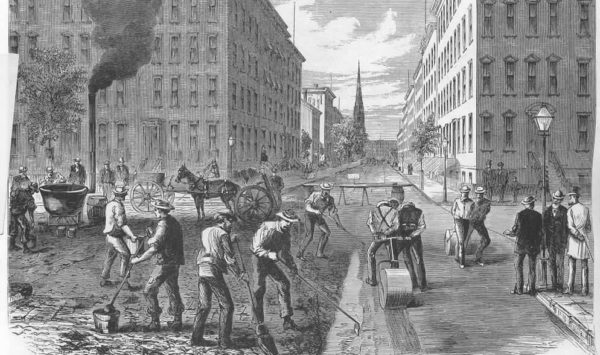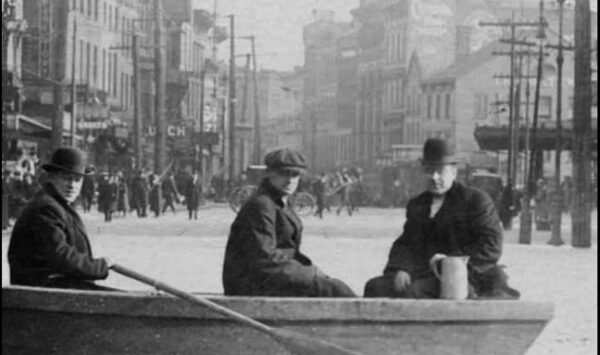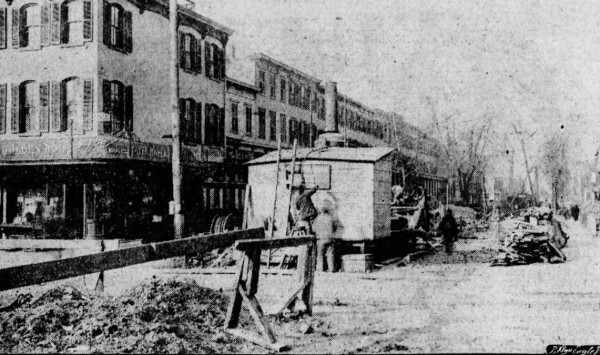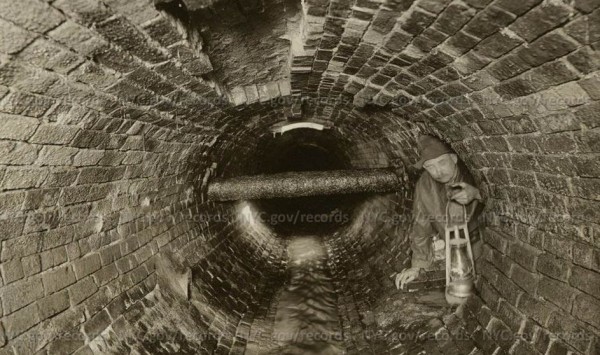A STREET GROWS IN BROOKLYN (1845)

******************************************************************************************************************************** Brownstone Detectives investigates the history of our clients’ homes. The story you are about to read was composed from research conducted in the course of one of those investigations. Do you know the history of YOUR house? ******************************************************************************************************************************** The growth of brownstone Brooklyn took place over a great many years. The long contiguous lines of rowhouses rocketed skywards across the city through the economic good times, as well as – at a less robust pace – through the many debilitating recessions. But rocket they did, leaving the footprints of the many contractors and builders who changed the landscape of Brooklyn into a City of Houses. Another mark that the contractors and builders left – although one not as celebrated today – was the complicated system of flagging, pipes, sewers, cisterns, streetlamps, and sometimes trolley tracks, that lined the streets and led to those very rowhouses. Each delivery and receiving system that connected each rowhouse to the city was an important step toward the development of the city. Before each row of houses was constructed (and sometimes while they were being constructed, or even soon afterwards), the development of each street and neighborhood was an important part of attracting the homeowners to Brooklyn. THE BIRTH OF BOERUM HILL Boerum Hill had only recently been planned for with a street grid system that would develop alongside of a vast network of sidewalks, sewers, street lamps, gas lines, and water mains. At this time, however, in the 1840s, it barely resembled such […]
THE GREAT BROOKLYN FLOOD OF 1903

******************************************************************************************************************************** Brownstone Detectives investigates the history of our clients’ homes. The story you are about to read was composed from research conducted in the course of one of those investigations. Do you know the history of YOUR house? ******************************************************************************************************************************** By 7 a.m. on Friday, 9 October 1903, the cellars all along Macon Street were completely inundated with water that was rising quickly toward the basement joists. Without let up, the turgid brown waters continued to pour into the homes through the under-stoop doorways until the floodwaters had reached the level of the basement windowsills, whereupon it then began to pour also through the windows and into the basement dining rooms. The Ocean Hill area, like much of Brooklyn, had fallen victim of the heavy rains that had been falling continuously for much of the night. All the residences along Hancock, McDonough, Macon, Decatur, Bainbridge and Chauncey Streets were so flooded that residents on the ground floor apartments discovered upon waking that they were forced to go to the second floors to escape the waters. “IN SARATOGA PARK…BENCHES WERE FLOATING ABOUT…” The paths in Saratoga Park, according to one newspaper account, “had become running streams and benches were floating about.” The nearby Putnam and Halsey streetcars stopped running, as “it was impossible to take on any passengers, as the water was as high as the seats.” Streets and sidewalks were submerged under several inches of water, and, eventually, furniture moving vans were pressed into service by the police to be used […]
TIMEWARP TUESDAY! DEAN ST. (1905 v. 2014)

******************************************************************************************************************************** Brownstone Detectives investigates the history of our clients’ homes. The story you are about to read was composed from research conducted in the course of one of those investigations. Do you know the history of YOUR house? ******************************************************************************************************************************** Back in late 1904/early 1905, people living on Dean Street, from Third to Fifth avenues, and on Fifth Avenue, from Dean Street to Flatbush Avenue, were “complaining bitterly of the condition of the streets, which have been torn up for a number of months. “The sidewalks are covered with dirt and rubbish and traffic is delayed seriously.” Pictured is the intersection at Dean Street and 4th Avenue – in 1905 and in 2014. Can you spot the differences between the two pictures? Follow @BrownstoneDetec Share ———————————————————————————————————————– The Brownstone Detectives Brownstone Detectives is an historic property research agency. Our mission is to document and save the histories of our clients’ homes. From our research, we produce our celebrated House History Books and House History Reports. Contact us today to begin discovering the history of your home.
DID YOUR BROOKLYN STREET FLOOD? (1912)

******************************************************************************************************************************** Brownstone Detectives investigates the history of our clients’ homes. The story you are about to read was composed from research conducted in the course of one of those investigations. Do you know the history of YOUR house? ******************************************************************************************************************************** By 1912, Brooklyn was drowning in rain water. The borough, by then, had installed so many more miles of cobblestone, macadam, and otherwise improved roads – than at any time in its past – that many of its streets would flood at the very hint of precipitation. In 1903, for example, the flooding was so bad that the Brooklyn Daily Eagle reported that “All the residences along Hancock, McDonough, Macon, Decatur, Bainbridge and Chauncey Streets were so flooded that residents on the ground floor apartments discovered upon waking that they were forced to go to the second floors to escape the waters.” The paths in Saratoga Park, according to one newspaper account, “had become running streams and benches were floating about.” The nearby Putnam and Halsey streetcars stopped running, as “it was impossible to take on any passengers, as the water was as high as the seats.” Thus, there finally came such an outcry from residents, who lived on the streets most prone to flooding, that the City decided to introduce more sewer lines to catch that water. At that time, to get an idea of what they were dealing with, the city sent out a small army of surveyors to gauge the lower lying areas of the city, so that […]